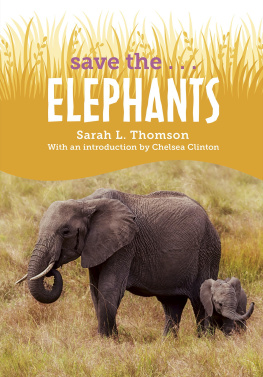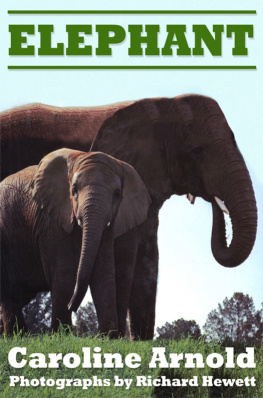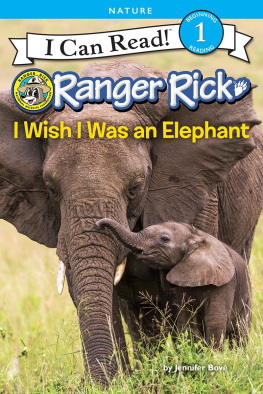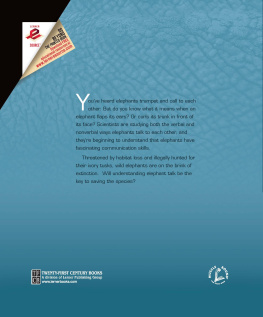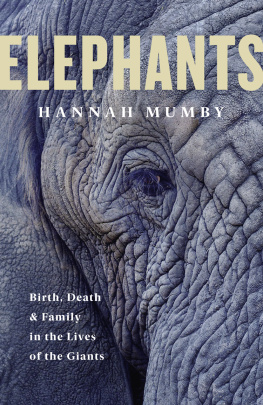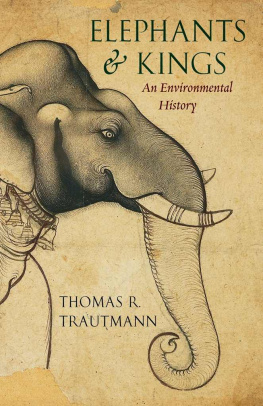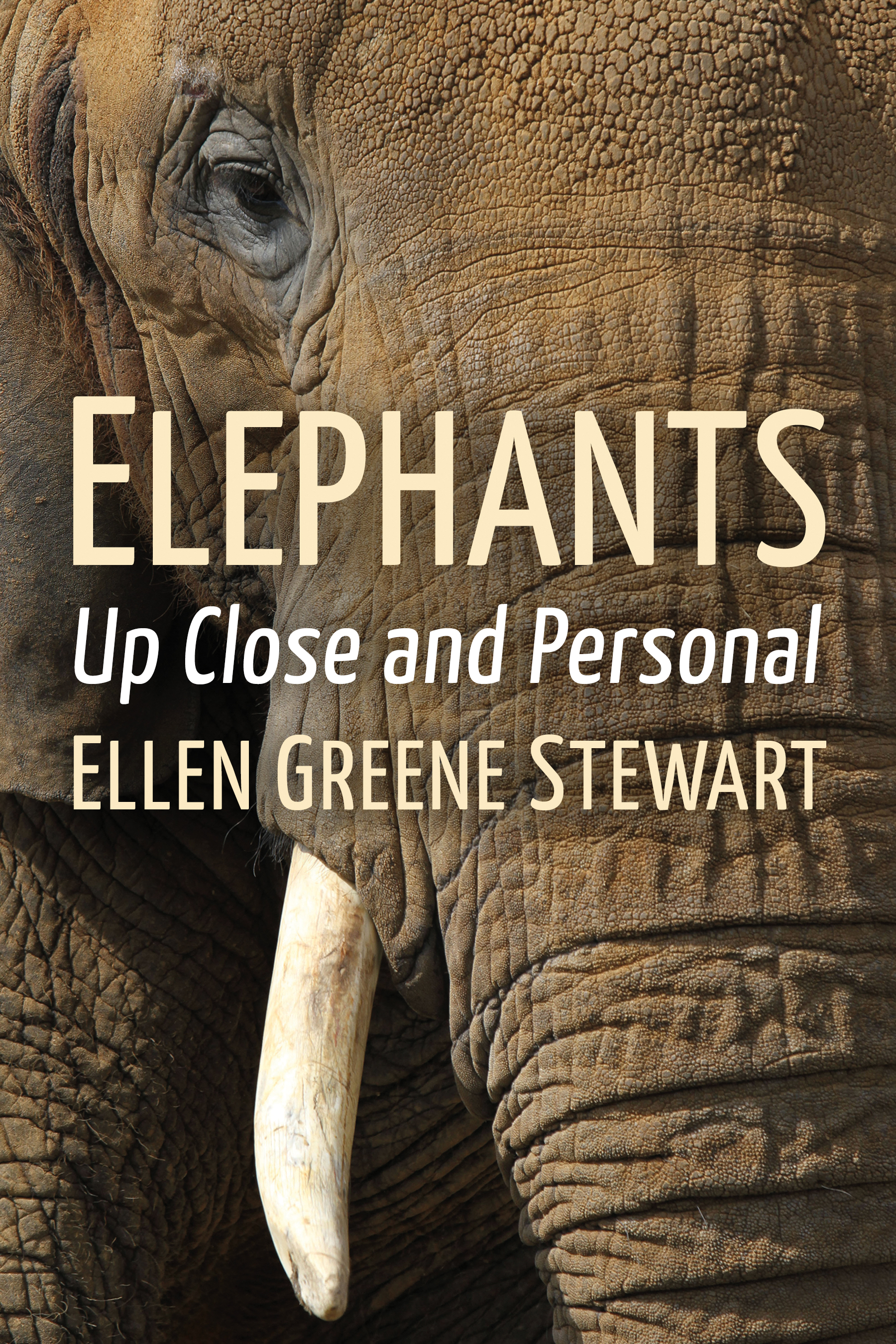Elephants
Elephants
Up Close and Personal
Ellen Greene Stewart

Jefferson, North Carolina
A portion of the authors proceeds from this book will be donated to the Knysna Elephant Park/AERU Research.
All photos are from the authors collection.
Library of Congress Cataloguing-in-Publication Data
Names: Stewart, Ellen Greene, author.
Title: Elephants : up close and personal / Ellen Greene Stewart.
Description: Jefferson, North Carolina : McFarland & Company, Inc., Publishers, 2022 | Includes bibliographical references and index.
Identifiers: LCCN 2022004503 | ISBN 9781476687797 (paperback : acid free paper )
ISBN 9781476645933 (ebook)
Subjects: LCSH: African elephantSouth AfricaKnysna. | African elephantSouth AfricaKnysnaAnecdotes. | African elephantConservationSouth AfricaKnysna. | BISAC: NATURE / Animals / Mammals
Classification: LCC QL737.P98 S743 2022 | DDC 599.67dc23/eng/20220218
LC record available at https://lccn.loc.gov/2022004503
British Library cataloguing data are available
ISBN (print) 978-1-4766-8779-7
ISBN (ebook) 978-1-4766-4593-3
2022 Ellen Greene Stewart. All rights reserved
No part of this book may be reproduced or transmitted in any form or by any means, electronic or mechanical, including photocopying or recording, or by any information storage and retrieval system, without permission in writing from the publisher.
Front cover photograph by Matt Ratcliff (Shutterstock)
Printed in the United States of America
Toplight is an imprint of McFarland & Company, Inc., Publishers

Box 611, Jefferson, North Carolina 28640
www.toplightbooks.com
This book is dedicated to the memory of Shepherd Chuma whose loving kindness and radiant smile enlightened the lives of so many. It is also dedicated to every elephant who has ever graced our planet with their mammoth hearts, their gentle spirits, ancient wisdom, and their amazing elegance.
Acknowledgments
I could not have written this book without the help, support, and encouragement I received from Dr. Maud Bonado, Shepherd Chuma, Sharon Cuccinata, Dumisani Dube, Julie Ford, Sue Fritz, Lilly Golden, Laurie Greene, Sylvia and Ken Greene, Mac Juwa, Davison Mbaura, Joan Medsker, Nicki Milachowski, Ndyebo Momsenge, Charles Moyo, Wilfred Nyamazunza, Fanwell Nyoni, Clare Padfield, Nikki Perosino, Kristen Artz Rendler, William Rendler, Kathy Schroeder, Arnie and Carol Schwartz, Noleen Skinstad, Bob Stewart, Lacey Peace Stewart, Anique Taylor, Michael Teitelbaum, Elliot Tembo, Christina Tholander, Sias Van Rooyen, Alex Vipond, Dr. Debbie Young.
Table of Contents
Preface
I remember the tipping point in which my love for elephants became an integral part of me. I rode high on the back of an elephant at the Bronx Zoo at the ripe old age of four and have remained drawn to them ever since. As I touched the elephants rubbery skin and bristly hair with my small hand, she reached me with her tender spirit. After years of reading about elephants in books, watching them on television and seeing them in the news, I was determined to find a place where I could interact with them up close and personal, experience their majesty firsthand as an adult. I quickly came upon the renowned volunteer program at the Knysna Elephant Park (KEP) on the southern coast of South Africa, and the rest fell into place.
My decision to visit KEP in South Africa was a long time in the making, however. This was an outsized leap of faith; I would have to travel alone, halfway around the world, to spend three weeks volunteering to assist with research and caring for the elephantsall with a group of people Id never met. I am not at all athletic and didnt know if I was physically fit enough for this adventure. I could hardly afford the trip, and I would have to take time off from work without pay in order to make the trip work. Id been to South Africa before to visit an orphanage for children whose parents died of HIV/AIDS in Durban on the east coast of South Africa with a dear friend. I was well aware of the long travel time and the jet lag as well as the expense and culture shock. It seemed like a long way and a lot of logistics to navigate just to interact with elephants firsthand. But that first trip to South Africa had changed me in ways that are difficult to articulate. Although the language, accents, native garments and culture are all unfamiliar to me, they felt strangely comforting, and I quickly realized that Africa is the cradle of life, both human and animal. Being back on South African soil felt like a homecoming to me in some unexplainable way.
On the long flight, I read the brochure on KEPs ten elephants, memorizing their names, identifying characteristics, studying their pictures and their personality descriptions. It is not easy to tell the elephants apart, so study is necessary. I could hardly believe I was going to see them in a matter of hours, the excitement preventing me from sleeping through the 16-hour overnight flight. By the time I arrived in Cape Town, I was exhausted and elated and still had another flight to take along the southern coast to George at the heart of the Garden Route.
When I finally arrived at the elephant park, I felt so welcomed by the staff, the guides and the elephants. My time there flew by, and I savored every minute of being out in the field with the elephants. These elephants had much to teach me, and all that was required of me was the willingness to learn from them. The following is the story of my trips to the park and tales of what the elephants taught me, up close and personal.
Any quotations without attribution are a result of the interviews conducted by the author.
Part One
South Africas Garden Route
Africa changes you forever, like nowhere on earth. Once you have been there, you will never be the same. But how do you begin to describe its magic to someone who has never felt it? How can you explain the fascination of this vast, dusty continent, whose oldest roads are elephant paths?Brian Jackman, The Last Elephants
South Africa: Land of Hope
South Africa, the country at the southernmost tip of the African continent, is diverse in its people, its wildlife, habitats and in its languages. Its pristine coastlines, which include three sides of South Africa, face great stretches of completely open water. At the southern tip two vast seas of completely different character come together, blurring the boundaries between the Atlantic and Indian oceans. This meeting of two oceans in the Cape areas creates a unique microclimatewith its own idiosyncratic weather and its own unique floraone that played a critical role in both human and animal evolution. South Africa is of colonialism and Zulu warfare fame, Nelson Mandela, apartheid and Truth and Reconciliation Commission fame. It is rich with mineral deposits of diamonds, gold and other jewels and is home to more than 56,000,000 people. Of the more than 1,000 languages spoken on the African continent, South Africa alone employs 11 official languages. Among them are English, Afrikaans, Zulu and Xhosa (sometimes spelled Khosa). South Africa borders on Mozambique to the northeast, Zimbabwe, Namibia and Botswana to the north and west, and it wholly envelops the countries of Lesotho and Eswatini (formerly Swaziland). Cape Town, one of the largest cities, is the southernmost African settlement before Antarctica. South Africas topography ranges from lush mountainous stretches to the flatter wine country, hilly sugarcane fields, and pristine beaches. It is approximately the size of the state of Texas.


